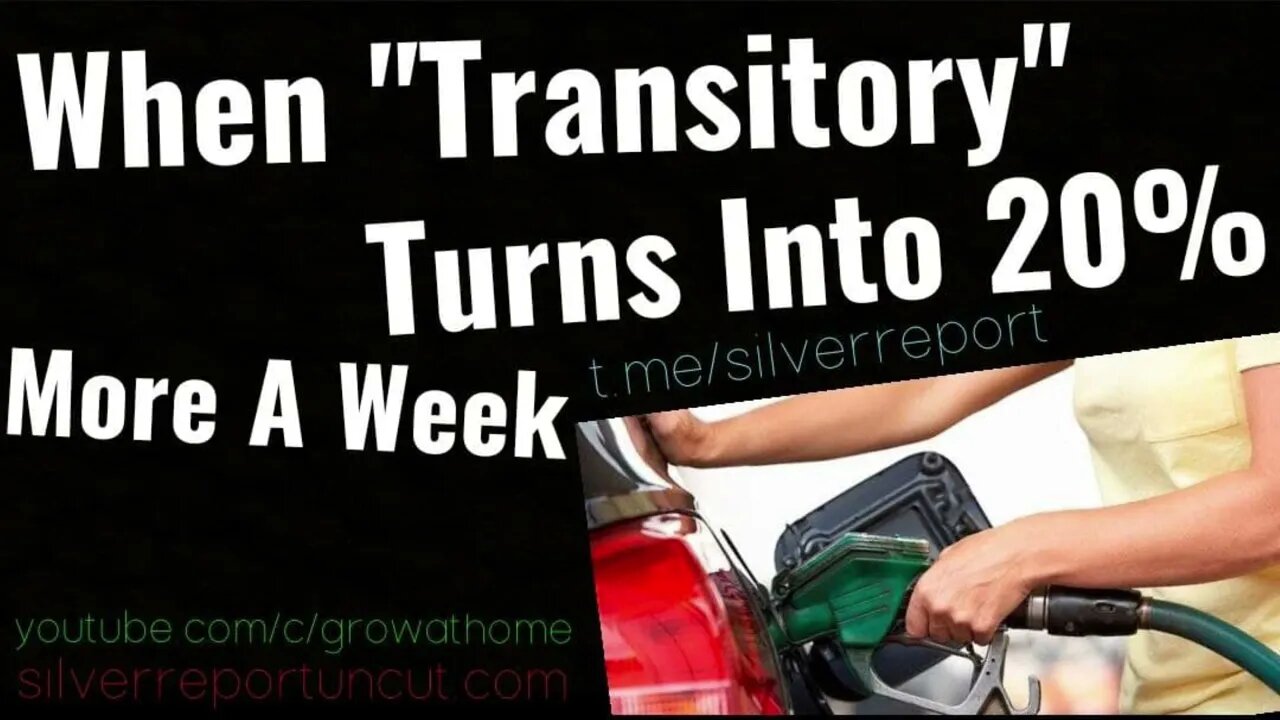Premium Only Content

Customers Spent 20% More On Gas, Zinc Jumps 7% Amid Industrial Metals Surge, Zinc Plants Shut Down
Subscribe to grow at home http://youtube.com/c/growathome
follow our our backup channel
http://bit.ly/odyseesru
Follow Us On Telegram http://t.me/silverreport
http://silverreportuncut.com
Subscribe to the SRU podcast
http://soundcloud.com/silverreport
http://silverreportuncut.podbean.com & https://parler.com/profile/silverreport/posts
anyone can post on our public group http://t.me/silverreportforum
Ad revenue is down almost 70%, it's viewers like you who help keep the sru coming! you can donate via crypto at our website or consider supporting our work on
http://buymeacoffee.com/silverreport
https://www.patreon.com/silverreport
Sept. 24 saw the highest amount spent on fuel in a single day since Lloyds Bank records began, analysis of customers’ debit cards shows.
The peak fell the day after BP and Tesco closed some filling stations due to problems with fuel delivery.
Across the UK, people spent a fifth (20 percent) more at petrol stations in the past two weeks, compared with the two weeks before, the bank said.
Sept. 24 saw the bank’s debit card users spend 125 percent more on fuel than on the same day in 2019, and the highest amount since records began in April 2014.
The East Midlands saw the biggest increase in fuel spending in the last two weeks compared with the two before, up 24 percent, followed by the West Midlands (23 percent), and the south east (22 percent).
This was followed by Yorkshire and Humber (20 percent). Wales and Scotland saw the lowest increases, at 14 percent and 15 percent respectively, followed by London and the south west on 19 percent.
However, the bank said there were signs that demand for fuel was easing. Week-on-week spending across the UK has fallen by almost a third (31 percent), with the number of transactions down 20 percent.
Only three regions, all in the south and east, saw drops of less than 30 percent. Londoners’ spending on fuel fell just 20 percent, the lowest of any region, followed by the south east (21 percent) and east of England (25 percent).
The energy crisis is bleeding into other parts of the commodity space, such as industrial metals, as smelters from Asia to Europe are knocked offline, resulting in a tightening supply with prices for zinc at 14-year highs.
Zinc jumped as much as 7% on the London Metal Exchange to the highest levels since 2007 after producer Nyrstar announced plans to halve output at three European smelters due to soaring energy prices.
-
 16:33
16:33
SRU
2 years ago $0.06 earnedMy 5 Youtube Channels Stolen By Elon Worshipping Hacker Who Absorbed My Online Identity
4306 -
 2:08:48
2:08:48
TheSaltyCracker
13 hours agoLefty Grifters Go MAGA ReeEEeE Stream 12-22-24
208K647 -
 1:15:40
1:15:40
Man in America
16 hours agoThe DISTURBING Truth: How Seed Oils, the Vatican, and Procter & Gamble Are Connected w/ Dan Lyons
130K118 -
 6:46:07
6:46:07
Rance's Gaming Corner
17 hours agoTime for some RUMBLE FPS!! Get in here.. w/Fragniac
161K3 -
 1:30:48
1:30:48
Josh Pate's College Football Show
17 hours ago $10.57 earnedCFP Reaction Special | Early Quarterfinal Thoughts | Transfer Portal Intel | Fixing The Playoff
93.6K1 -
 23:55
23:55
CartierFamily
3 days agoElon & Vivek TRIGGER Congress as DOGE SHUTS DOWN Government
134K156 -
 5:43:44
5:43:44
Scammer Payback
2 days agoCalling Scammers Live
226K30 -
 18:38
18:38
VSiNLive
2 days agoProfessional Gambler Steve Fezzik LOVES this UNDERVALUED Point Spread!
162K20 -
 LIVE
LIVE
Right Side Broadcasting Network
10 days agoLIVE REPLAY: President Donald J. Trump Keynotes TPUSA’s AmFest 2024 Conference - 12/22/24
3,454 watching -
 4:31
4:31
CoachTY
1 day ago $28.83 earnedCOINBASE AND DESCI !!!!
197K13